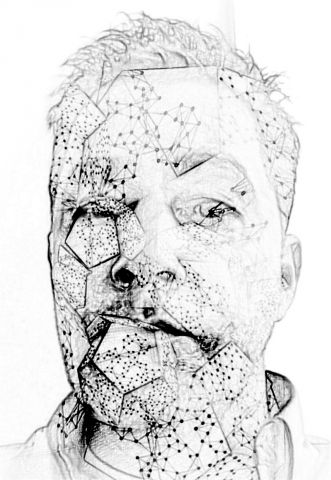Lets put some of these notions to the test then. Lets question an exemplar and debate it’s values, let’s see if it leads to pastiche and mimicry. Let’s give it to the pupils and see what results.
I have recently started teaching my Year 9 cohort a module entitled “Olympic Futurism,” where the focus of the learning has been to try and create some empathy with disability in light of the success of this summers Paralympics in London, and develop that learning into Futurism influenced, contemporary art.
Through a series of starting points, I instructed my pupils to complete a set of timed exercises that in one way or another removed them from their daily comfort zones. Using wooden mannequins, pupils positioned them into athletic poses and
Completed a;
Left handed drawing unless they were left handed, then they used their right hand instead,
then they; –
Drew with their pencil pushed through a piece of paper so they couldn’t see what they were doing,
Drew with a continuous line,
Drew holding their pencil with their feet or mouth,
and finally
Drew with charcoal attached to a long stick, paper on the floor, standing up.
Primarily I was exploring the loss of vision and disorientation of the tactile senses, hoping my pupils would appreciate that for those who took part in the games, this was the norm and irreversible. Surprisingly it was my lower ability pupils who grasped this concept most and it was only hindsight that pointed out the logic of this. In the resulting conversations with groups discussing the work it was evident that the lower ability pupils identified better with disability… a remarkable telling and learning for me… but how could that be used to further inform my high ability pupils and progress the whole cohorts ideas?
I ended up with a set of childlike, fragmented images steeped with movement and motion. It was the decomposition and activity that I wanted to explore further.
Beatrice Coron, as a paper cutter storyteller, gives me access to a very different way of working. The idea of stencils really appeals and gives my pupils a way in to a whole host of new techniques and skills. But I never use an artist alone as this tends to encourage pupils to emulate and clone their work, so a logical second choice artist seemed for me to be a street artist such as Adam Neate, who is steadily building a growing reputation in the art world. Two things appeal to me about his work. Firstly, up until this point my pupils had only really focused on the body form. They had also made some conventional studies of the human figure and detailed investigations of medal winners. But all these drawings were featureless. Adam Neate mainly makes images of faces. Secondly, I always try and find a good story to entice my pupils in. Neate built his career by leaving his images in city centers on piles of rubbish. Anyone who found his work was entitled to keep it, and with the work now selling for thousands of pounds, that gave me an idea.
I cut Beatrice Coron’s face as a stencil in my own style and then spray-painted it onto a sheet of cardboard with a background (image 1) in the style of Adam Neate. Having made the piece I was able to tell my pupils that it was now a “fake” Neate and I would be leaving it in a city to see what might happen! But I recognize that certainly ticks the boxes for pastiche, so the question became; what else could I do with the image?


